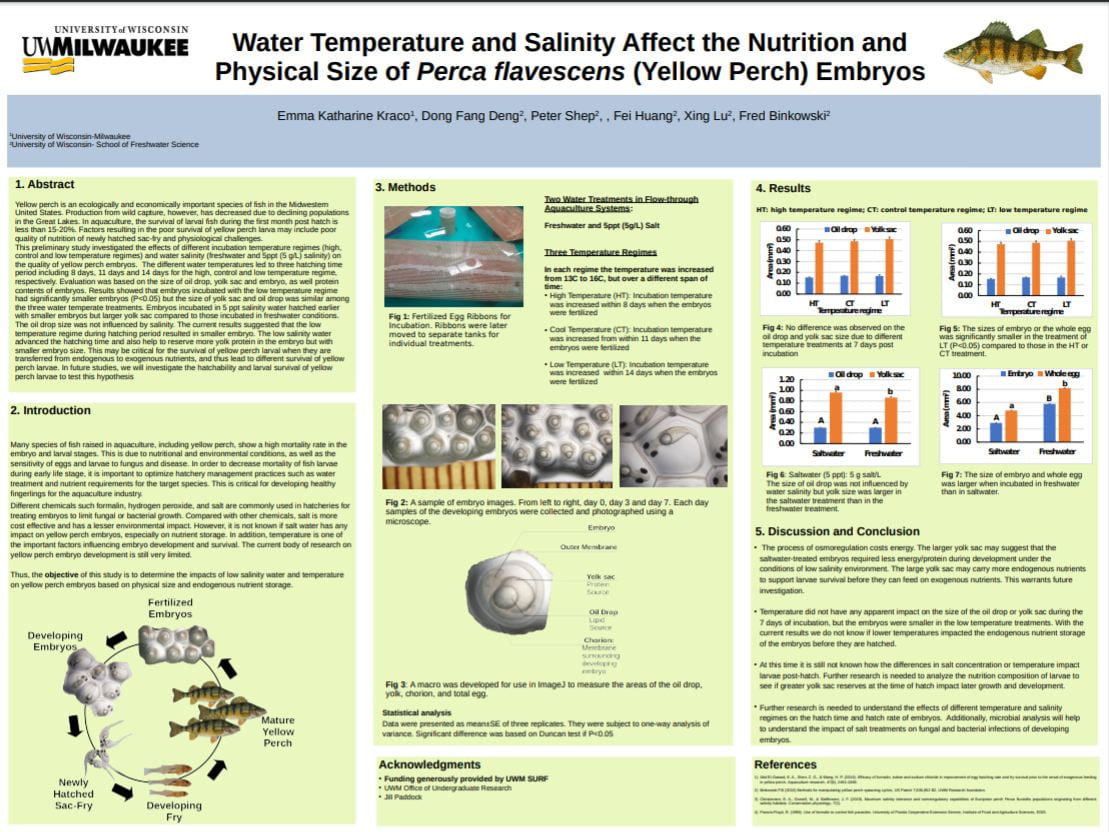Emma Kraco, “Water Temperature and Salinity Affect the Nutrition and Physical Size of Perca flavescens Embryos”
Mentor: Dong Fang Deng, Freshwater Sciences
Perca flavescens (yellow perch) is an ecologically and economically important species of fish in the Midwestern United States. Production from wild capture, however, has decreased due to declining populations in the Great Lakes. In aquaculture, the survival of larval fish during the first month post hatch is less than 15-20%. Factors resulting in the poor survival of yellow perch larva may include physiological challenges and poor quality of nutrition of newly hatched sac-fry. This preliminary study investigated the effects of different incubation temperature regimes (high, control and low temperature) and water salinity (freshwater and 5ppt salinity) on the quality of yellow perch embryos. The different water temperatures led to three hatching time periods: 8, 11, and 14 days for the high, control and low temperatures, respectively. Evaluation was based on the size of oil drop, yolk sac, and embryo, as well protein contents of embryos. Results showed that embryos incubated with the low temperature regime had significantly smaller embryos (P<0.05) but the size of yolk sac and oil drop was similar among the three water temperate treatments. . Embryos incubated in 5ppt salinity water hatched earlier and had smaller embryos but larger yolk sac compared to those incubated in freshwater conditions. The oil drop size was not influenced by salinity. The hatchability was not affected by the temperature regime or salinity (P>0.05).The current results suggested that only the low temperatures changed the embryo growth during incubation period. The low salinity water advanced the hatching time and also help to reserve more yolk protein in the embryo. This may be critical for the survival of yellow perch larvae when they are transferred from endogenous to exogenous nutrients.
Click the thumbnail below to open the full sized poster in a new tab.


Your research was easy to understand for a non-science person. Your research was well-organized, clear methodology and research questions, along with a strong understanding of your results. Great job.
Thank you for this very interesting presentation. The material is well-organized and well-visualized with images. In part 2 you provide a very clear basis for a non-specialist to get their bearing. Section 5, bullet point 1 shows that you have advanced the study of acquaculture perch another step. Excellent!